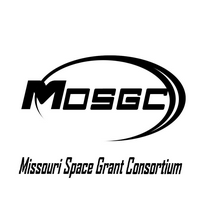Missouri Space Grant Consortium
Light Polution Research Group – TSU/MACC

Quantifying, Addressing, and Reducing Light Pollution using Light Sensors, DSLR Cameras, and Light Shields
Faculty and undergraduate students at Truman State University and the Moberly Area Community College (MACC) participated in activities related to quantifying the light pollution in and around the Kirksville area in northeast Missouri, and near Anderson Mesa in Flagstaff, Arizona. Students used light sensors to track the amount of light projected towards the sky at various locations on campus, the University farm, at Thousand Hills State Park (about 5 miles W/NW of Kirksville), and at Anderson Mesa (about 15 miles S/SE of Flagstaff, Az). In addition, students used DSLR cameras to qualitatively capture the amount of light pollution by capturing long exposure tracked and untracked images of the night sky.
Students have reached out to school administrators, the Truman State Physical Plant, and the local power company (Ameren) to understand the process of outdoor light and light fixture selection.
Students successfully obtained internal funding through the Funds Allotment Council and the Environmental Sustainability Fee Committee ($3000 + $2500) at Truman State University to installed warmer lights and light shields on outdoor lights across the campus.
Additionally, students continue to increase awareness about light pollution as part of the outreach program during the weekend shows at the Del and Norma Robison Planetarium at Truman State University. This includes handing out light pollution related brochures, a 6-minute Losing the Dark planetarium documentary produced by the International Dark Skies Association, and Q&A sessions with the audience.
Finally, a lecture on light pollution was developed and taught in the Introductory Astronomy class at TSU in the Spring Semester of 2018.

